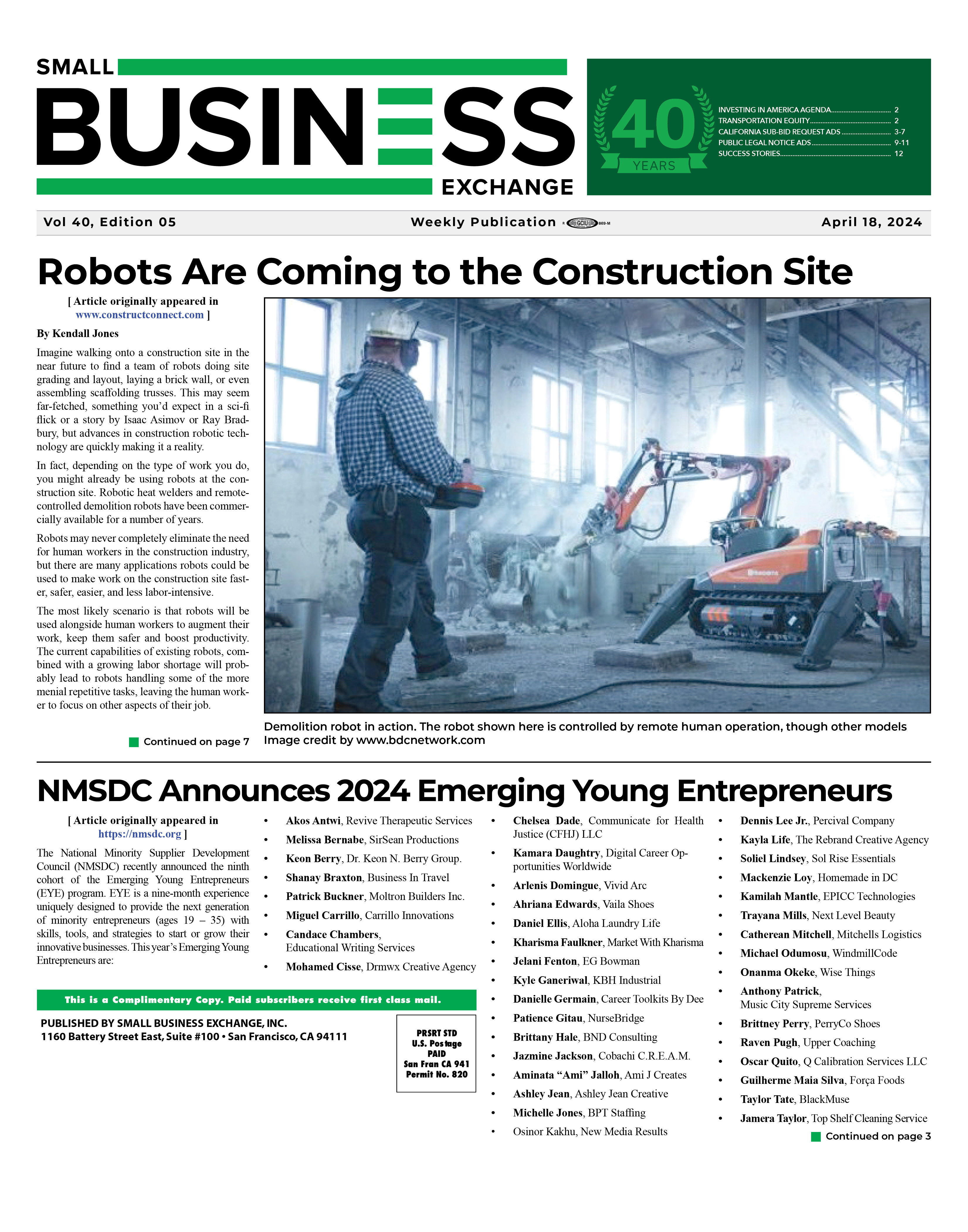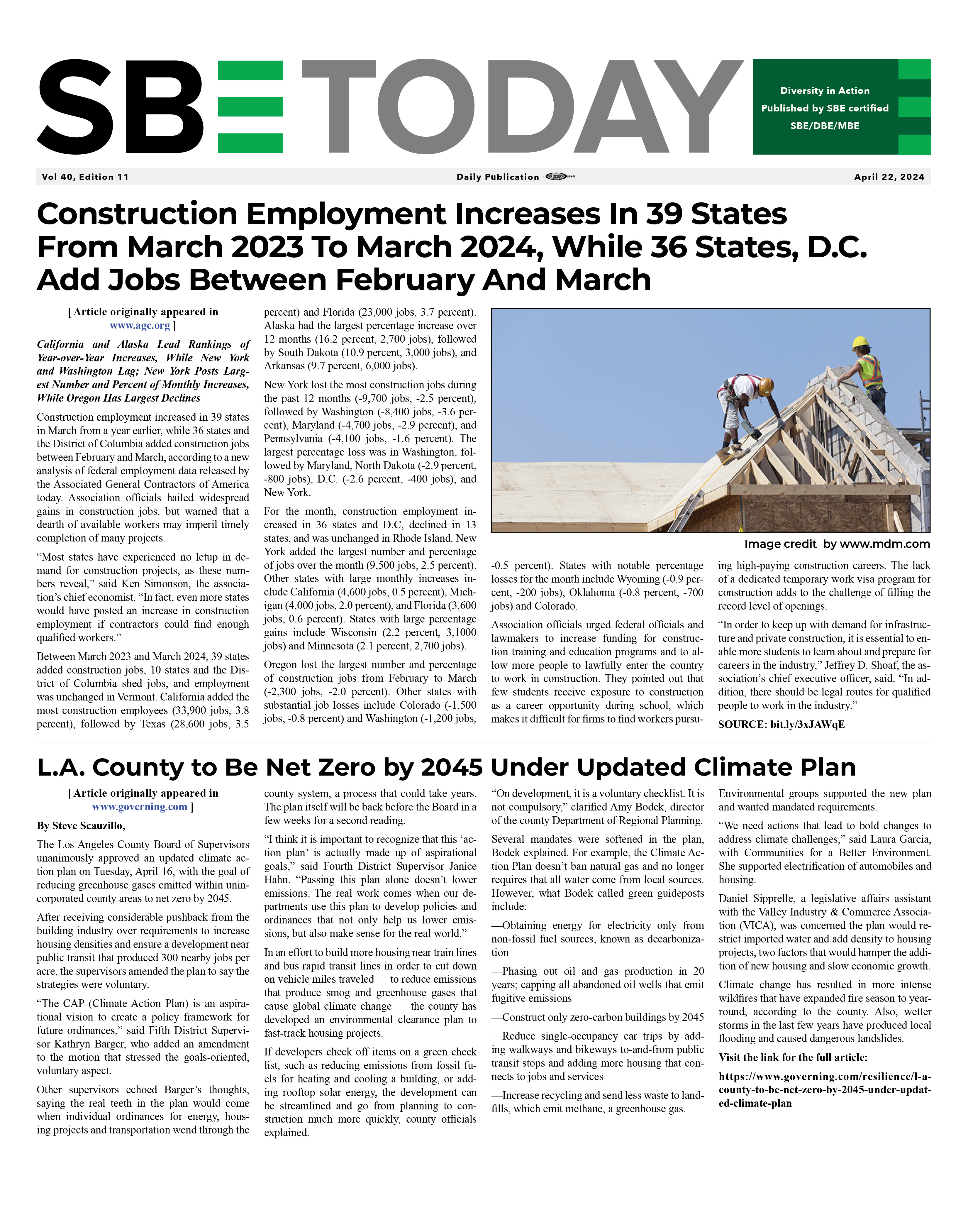Toolbox Talk: Protecting Workers From COVID-19 on the Jobsite
04/08/2020
[ Article was originally posted on www.constructconnect.com ]
By: Kendall Jones,
The list of essential businesses that requires employees to physically show up for work, rather than working from home, varies by each jurisdiction but generally covers grocery stores, pharmacies, hospitals and healthcare facilities, banks, hardware store, gas stations, and restaurants providing delivery or curbside pickup. All but four states, Michigan, New York, Pennsylvania, and Washington, and a handful of counties and municipalities have deemed construction nonessential. For many construction workers, where working from home is not an option, this is both a blessing and a curse. They want to continue working but are also struggling with the fear and threat of contracting the coronavirus on the jobsite. This is especially concerning for workers who are immunocompromised or have family members at home who are at high-risk, like the elderly. Safety is supposed to be the top priority on every construction site. The General Duty Clause of the Occupational Safety and Health (OSH) Act of 1970 states that “Each employer shall furnish to each of his employees employment and a place of employment which are free from recognized hazards that are causing or are likely to cause death or serious physical harm to his employees.” On a construction site, this is as true whether it’s a slip and fall hazard, an electrocution hazard, or the coronavirus. In order to protect workers and prevent the spread of the coronavirus, both OSHA and the CDC have provided resources and guidelines for businesses and employers to follow. Here are some tips on the most effective ways to protect your workers, slow the spread, and flatten the curve: Have a Plan of ActionOSHA recommends creating an infectious disease and preparedness and response plan, for employers that don’t already have one in place. This should incorporated into your site-specific safety plan and include identifying where and how workers could be exposed on the jobsite, including their commute for those that are carpooling or using public transportation, and what measures you are taking to reduce exposure through engineering controls, administrative controls, and the use of personal protective equipment (PPE). Your plan should also include what measures will be taken should an employee test positive for the coronavirus. Have a dedicated COVID-19 point person that is responsible for executing the response plan, overseeing safety measures and screening procedures and keep up on the latest guidance from federal, state, and local health agencies on how best to protect workers. This person(s) should be on the jobsite every day. Practice Social DistancingBecause the coronavirus is believed to spread by person-to-person it is important to maintain a social distance of six feet apart from other workers. Each construction site is unique and maintaining six feet of separation might be easy for some tasks and jobsites, it’s extremely difficult for others, like on larger construction projects or when multiple trades are all working at the same time. This may require shuffling around the project schedule and staggering work shifts and trades to avoid having large groups of workers in the same area on the jobsite. Provide workers with bottled water instead of a communal water cooler and don’t allow workers to congregate on breaks or during lunch. Workers should be discouraged from carpooling or using public transportation whenever feasible. Screen EmployeesCommon symptoms of the coronavirus include fever, cough, and shortness of breath and can present anywhere from 2 to 14 days after exposure. You need to be screening everyone coming on to the jobsite and taking each person’s temperature with a contactless thermometer. Workers should be encouraged to report any symptoms that they or a coworker may be exhibiting. If a worker is showing symptoms, they should be sent home immediately and not allowed to return to work until they have been tested and have a negative result. Many people who contract COVID-19 are asymptomatic, meaning they show no signs of illness, which means screening workers is not guaranteed to prevent the spread of the disease on the jobsite. If a worker has tested positive, you need to inform all your employers as well as any subs, suppliers, inspectors, etc. who may have visited the jobsite. Have workers self-monitor and self-report if they develop any of the symptoms. Workers should also inform you before coming to the jobsite if they have a family member at home who is sick or symptomatic. Wash Your HandsSet up temporary handwashing and sanitizing stations throughout the jobsite. Encourage workers to wash their hand frequently throughout the day, especially if they aren’t wearing gloves, and after handling tools, equipment, and materials. They should also be washing before and after eating, before and after treating any cut or wound, and after using the toilet. Put signs up on the handwashing stations instructing workers that they should be scrubbing for at least 20 seconds before rinsing them off under running water. There are a number of songs, poems, or monologues that people have suggested to sing or recite that lasts 20 seconds to use as a timer while washing your hands. If soap and/or running water is not feasible on the jobsite, hand sanitizer that contain at least 60% alcohol can be used instead. Don’t Share ToolsA recent study from scientists with the National Institute of Health, CDC, UCLA, and Princeton University shows that COVID-19 can remain active in aerosols for up to three hours, on copper for up to four hours, on cardboard for up to 24 hours, and on stainless steel and plastic for up to two or three days. It’s important that workers refrain from sharing tools or equipment whenever possible. When items like ladders, scaffolding, heavy equipment, etc. have to be share, workers should be wearing gloves and other PPE or cleaning and disinfecting surfaces. Clean & Disinfect the JobsiteConstruction sites aren’t exactly known for their cleanliness. Any surface that a worker touches or comes into contact with should be cleaned and disinfected regularly. Be sure to use a disinfectant that has an EPA-approved disinfectant label with claims against emerging viral pathogens. Always pick a disinfectant based on the type of surface you are cleaning and follow the label directions and contact time for effective disinfecting. Wear Your PPEConstruction workers are used to having to wear PPE whether it’s hard hats, gloves, safety goggles, steel-toed boots, or even N95 respirators depending on the type of work they do. Typically, PPE is the last line of defense and should not be relied upon as the primary protection of workers and used in conjunction with engineered safety systems, machine guards, and safe working practices, not as replacement for these things. With the coronavirus, workers should be wearing appropriate gloves and face masks, respirators, or face shields based on the work being performed and if social distancing is an issue. Because of the N95 respirators shortage, OSHA has advised that “all employers should reassess their engineering controls, work practices, and administrative controls to identify any changes they can make to decrease the need for N95 respirators.” They also issued guidance on other respirators that are permissible alternatives as well extended and reuse of N95 respirators. Toolbox Talks & Safety Meetings Toolbox talks, or short safety meetings, are a great way to keep all your workers informed of what’s going on and reinforce safe working practice, safety basics, and focus on high-risk scenarios. Be sure to remind workers about social distancing, handwashing practices and locations of handwashing stations, not sharing tools, etc. The Associated General Contractors of America (AGC) is asking all of its members to participate in a nationwide coronavirus safety stand down tomorrow, April 9 and has provided some documents for holding toolbox talks around coronavirus and keeping workers safe. You may have to get creative when hosting toolbox talks and safety meetings to maintain social distancing by either meeting in smaller groups or using something like Zoom meetings with workers on their phones or by sending out safety messages and tips via text or email to your workers.
As always, if you are on the jobsite: Work Smart, Stay Safe.
Source:Ran in 03-15-2021 newsletter
Back To News |
|
|
|
ABOUT SBE Inc.
Small Business Exchange Inc., is the ultimate business information hub for small businesses, disadvantaged, Asian, Black, Hispanic Women and Disabled Western-owned Business. Founded in 1984 by Gerald W. Johnson and Valerie, Voorhies, SBE, has been working for over two decades to provide businesses with the most powerful tools available and accurate, up-to-date information about contract opportunities in the public and private marketplaces. CONTACT
Small Business Exchange, Inc.
Phone: 415-778-6250
© 2024 Small Business Exchange, Inc.
|
||
|
|
Toolbox Talk: Protecting Workers From COVID-19 on the JobsiteBack To News |
|




